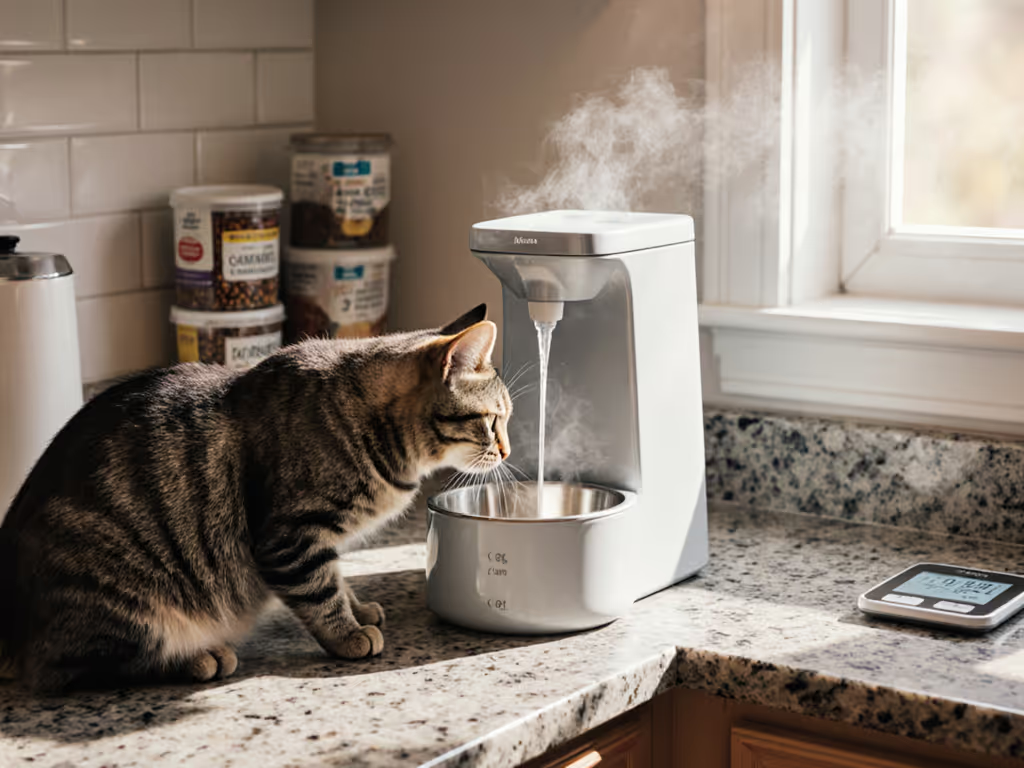
Best Cat Water Fountains: Prevent Dehydration
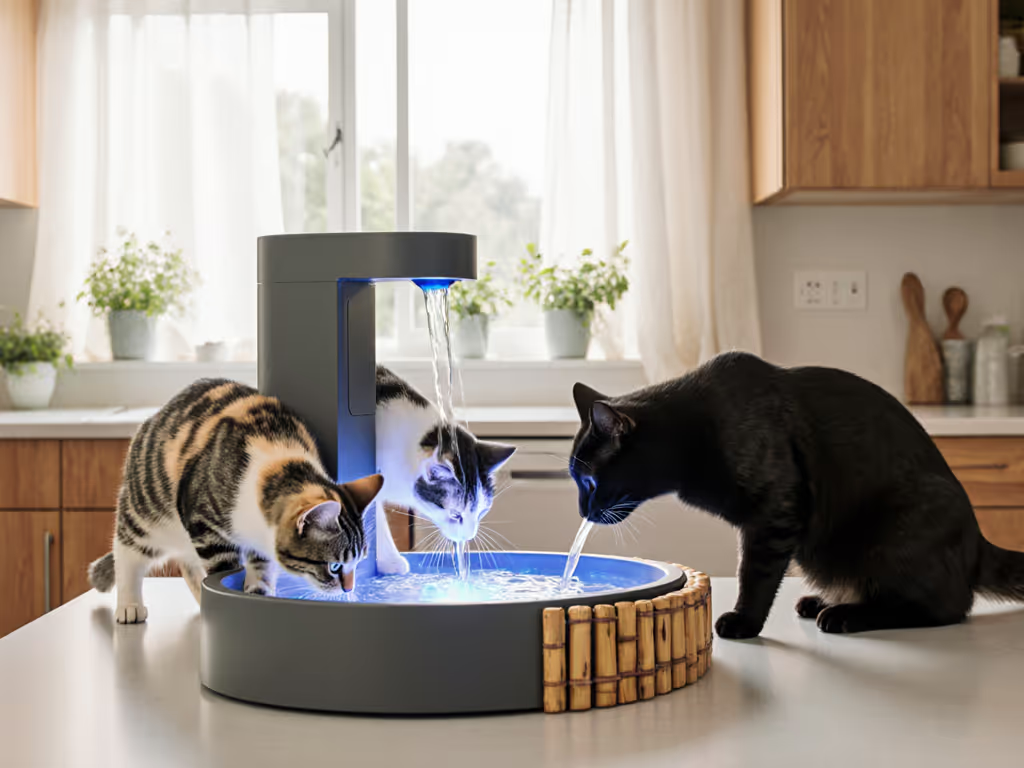
As a multi-cat household veteran, I've learned that cat water fountains aren't just about hydration; they're strategic tools to reduce contestable resources. When you're managing two or more cats in limited space, stagnant water bowls become hotspots for tension. The best cat water fountains transform this potential conflict zone into a peaceful hydration station through predictable access and clean water flow. In my one-bedroom apartment, I witnessed how a timid cat would avoid the water bowl when a dominant one was nearby, until we implemented a fountain system that kept multiple access points fresh and flowing.
Why Water Dynamics Matter in Multi-Cat Homes
Cats are desert-adapted creatures with low thirst drives, which makes hydration challenges compounded in multi-cat environments. When resources feel limited or contested, even water access can trigger guarding behaviors. Stale, stagnant water further discourages drinking, especially for shy cats who wait for dominant housemates to leave the area.
Studies confirm cats drink 20-30% more from moving water sources, but the real magic happens when fountains support cat dehydration prevention through reliable routine design. As I documented across shelter fosters and my own home, fountains work best when they serve as neutral zones where all cats feel safe to drink.
Fair water access is behavior design, not just buying gadgets. When water becomes predictable and plentiful, you reduce the perceived scarcity that triggers competition.
Step-by-Step: Implementing Water Fountains for Multi-Cat Harmony
Step 1: Strategic Placement for Uninterrupted Access
Map your space using this simple room diagram approach:
Kitchen: Main fountain near entry (not next to food)
Living room: Secondary fountain near quiet resting area
Bedroom: Optional third station for anxious cats
Key placement principles:
- Position fountains away from food bowls and litter boxes (minimum 6 feet)
- Choose wide, stable bases away from high-traffic paths
- Elevate on stable platforms if cats have mobility issues
- Create visual barriers between stations using furniture
In my apartment with three cats, I placed one fountain near the kitchen entrance and another in the living room behind a low shelf. This created two distinct hydration zones that eliminated the "shadowing" behavior where one cat would block another's access.
Step 2: Establish Time-Blocked Water Routines
Cats thrive on predictability. Build these time-blocked steps into your daily schedule:
- 6:00 AM: Top off reservoirs and check filter status
- 1:00 PM: Quick visual inspection during lunch break
- 7:00 PM: Full cleaning check and water refresh
- 10:00 PM: Final reservoir top-off before bed
This routine ensures consistent freshness while creating multiple low-stress drinking opportunities. I time my fountain maintenance around my work breaks (when the cats are napping) to avoid disrupting their natural rhythms. The constant flow replaces the need for cats to compete for "fresh water moments."
Step 3: Cleaning Schedule That Prevents Biofilm Buildup
How often to clean cat fountain properly? Daily surface wipes plus weekly deep cleaning.
Biofilm (the slippery slime that builds up in water systems) creates a health hazard that discourages drinking. My shelter volunteer experience taught me that inconsistent cleaning turns fountains into deterrents rather than attractants.
Create this simple maintenance checklist:
- Daily: Wipe external surfaces and splash zones
- Every 3 days: Replace 50% of water with fresh
- Weekly: Full disassembly, vinegar soak, and filter replacement
- Monthly: Inspect pump function and tubing integrity
When I started using this precise cleaning rhythm, I noticed my cats stopped pawing at the water, likely because they weren't trying to "clean" it themselves. Consistent freshness means they trust the resource, reducing the need to guard it.
Step 4: Troubleshooting Multi-Cat Water Issues
Even with excellent setups, challenges arise. Use this plain checklist when problems emerge:
Problem: One cat dominates the fountain
- Solution: Add a second fountain in a different room
- Alternative: Install a visual barrier between drinking zones
Problem: Cat avoids drinking from fountain
- Solution: Test different flow patterns (some prefer gentle bubbling)
- Alternative: Try ceramic or stainless steel bowls instead of plastic
Problem: Water consumption still seems low
- Solution: Measure daily intake for 3 days
- Alternative: Add broth ice cubes to increase interest
Problem: Frequent clogs or pump issues
- Solution: Clean filter housing weekly
- Alternative: Switch to charcoal-based filtration
When my senior cat started avoiding the fountain, I discovered she disliked the motor noise. Switching to a quieter model with a different pump mechanism solved the issue within two days, proving that equipment choices must match individual sensitivities. To compare noise, filtration, capacity, and cleaning across brands, see our fountain brands comparison.
Beyond Hydration: The Ripple Effect of Smart Water Design
The right cat water intake tips extend beyond physical health. When water access feels secure and abundant, cats exhibit less resource guarding overall. I've documented how homes implementing these fountain strategies see reduced tension around food bowls too, likely because the household's resource dynamic has shifted from scarcity to abundance.
The best water fountains for cats in multi-cat homes share these critical features:
- Quiet operation (under 45 dB for noise-sensitive households)
- Modular components that accommodate different drinking heights
- Filter systems that handle multiple daily refills
- Stable bases that resist pawing or tipping
- Materials that resist biofilm buildup
Remember that water harmony supports meal harmony. When cats aren't competing for hydration resources, they approach food stations with less tension. This creates a positive feedback loop where routine predictability reduces anxiety across all resource interactions.
Creating Lasting Hydration Habits
True cat dehydration prevention emerges from consistent systems, not isolated products. By designing your fountain setup as part of your household's behavioral ecosystem, you create an environment where all cats can drink freely without conflict.
For those ready to deepen their understanding, I recommend tracking your cats' water intake for one week before and after implementing these strategies. The data often reveals surprising patterns about who drinks when, and how fountain placement transforms those dynamics. Document what works in your unique space, because harmonious multi-cat living always starts with protected access to essential resources.
Reduce contestable resources through thoughtful routine design, and you'll create peace that flows through every interaction.
Related Articles

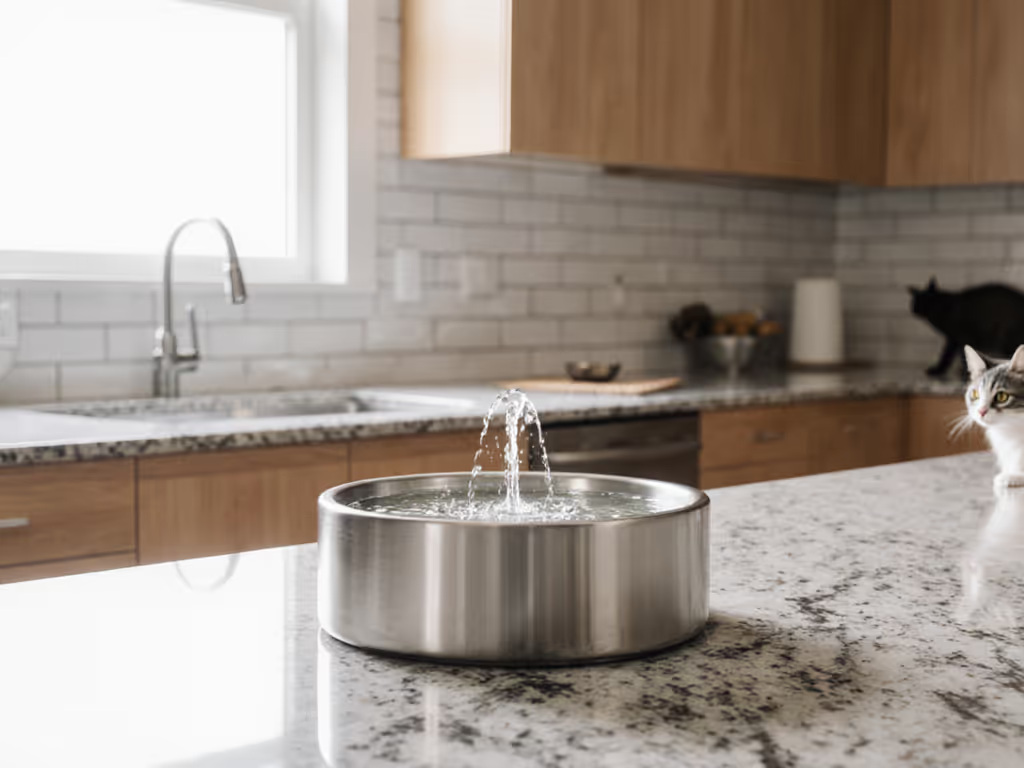
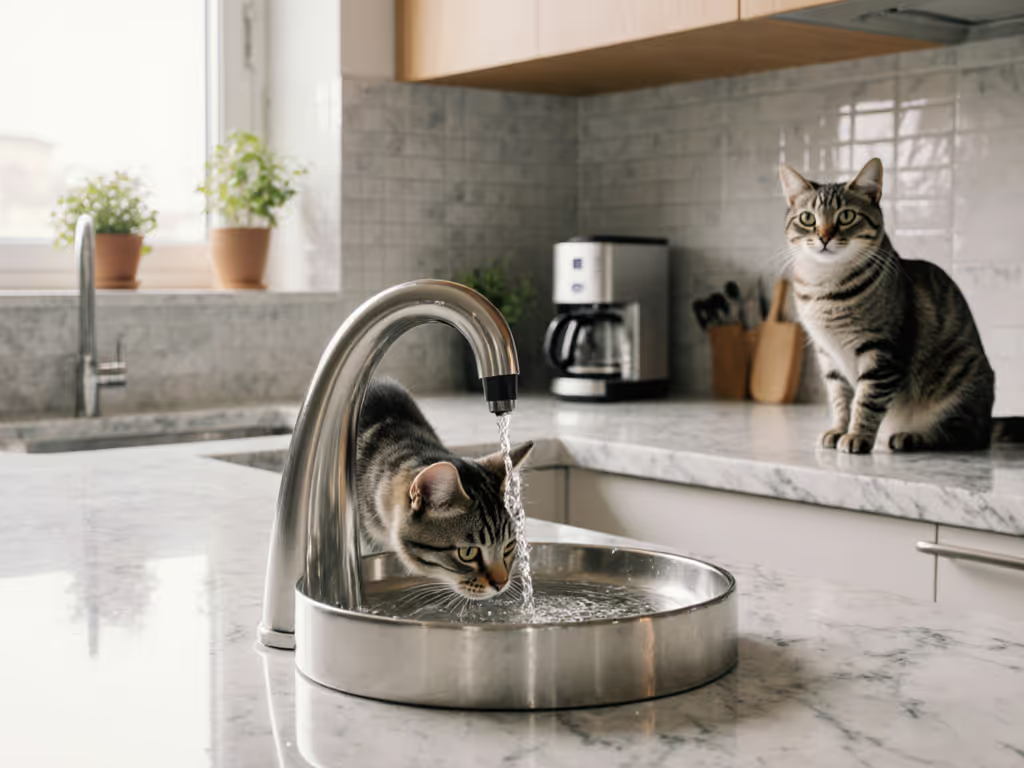
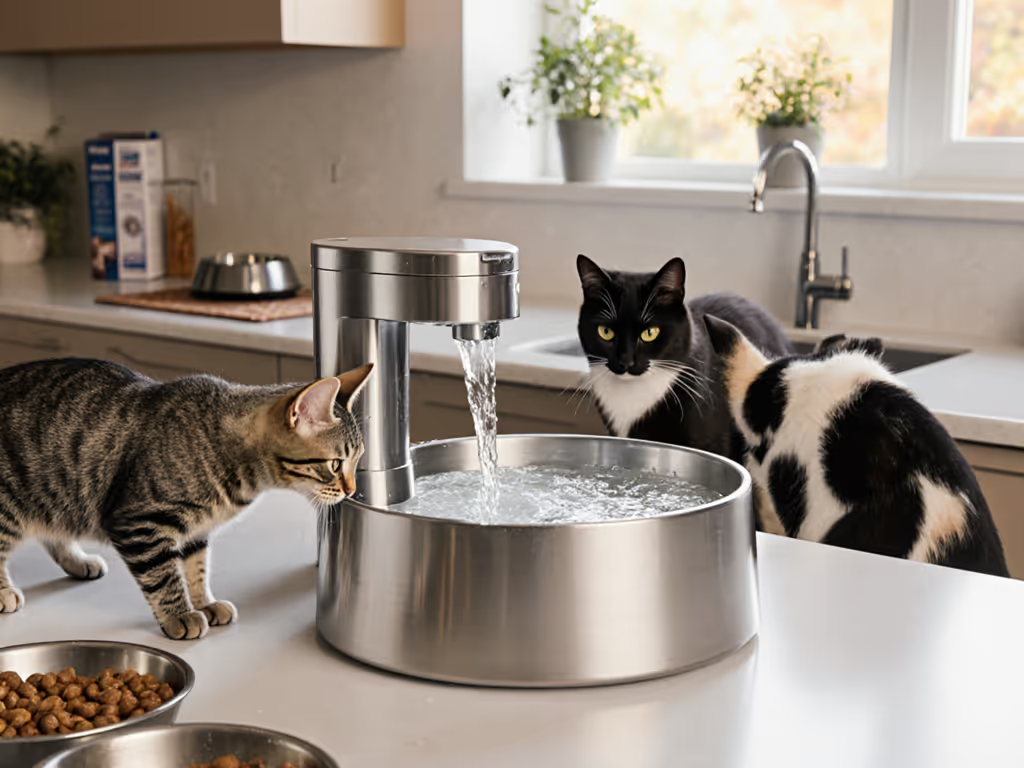
Best Cat Water Fountains: Long-Lasting Filters & Quiet Operation
Choose a cat fountain by total cost of ownership - filters, energy use, cleaning time, and warranty - not just sticker price. A transparent five-year comparison shows how a quiet, stainless steel design can reduce maintenance and save money in the long run.
